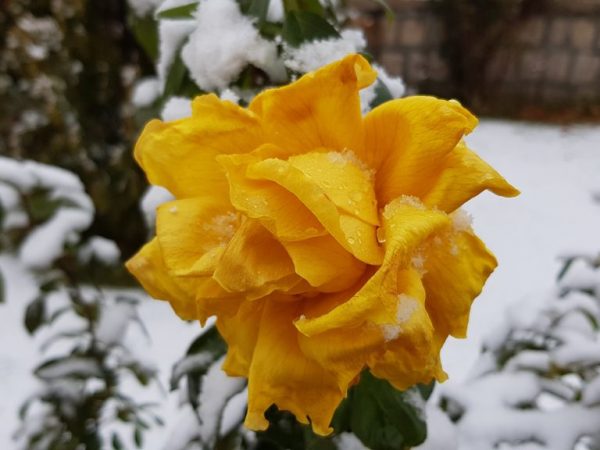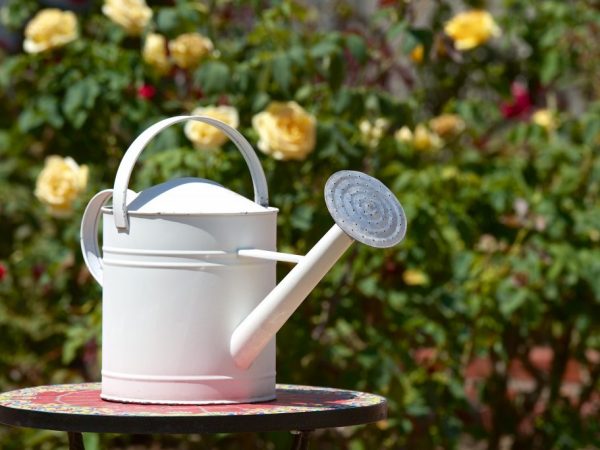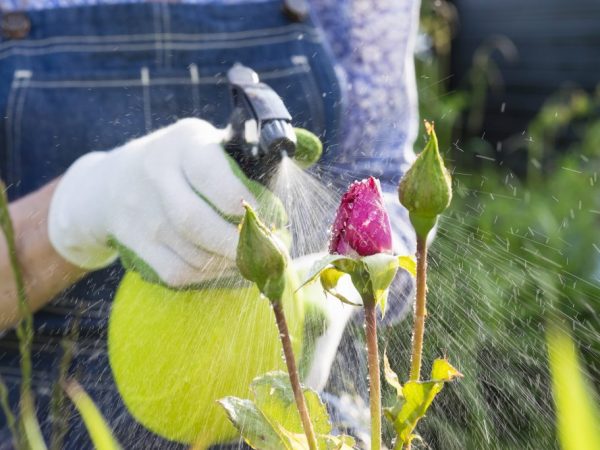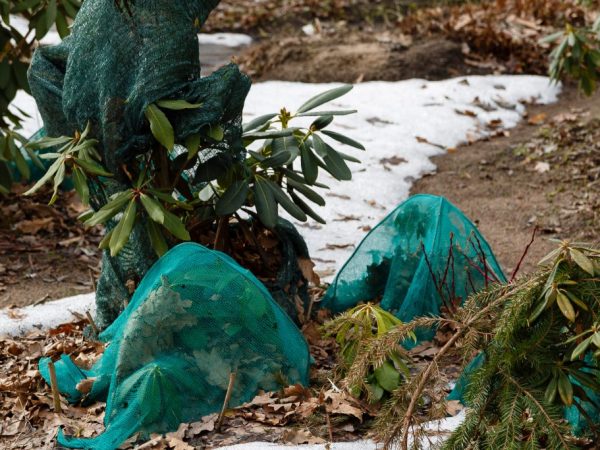We cover roses for the winter in the Moscow region - rules and terms
The rose is quite capricious to the growing conditions. Long frosty winters are especially dangerous. In the southern regions, it calmly tolerates small frosts, but in the northern latitudes, efforts will have to be made to preserve its beauty until next spring. Consider how to cover roses for the winter in the suburbs.

We cover roses for the winter in the Moscow region - rules and terms
When to start preparing for winter
Severe winters reign in the Moscow region. They are dangerous with a small amount of snow and sudden drops of the thermometer by a dozen degrees during the day. Since the beginning of October, summer residents have been on the alert, covering materials have already been prepared for the crops most sensitive to temperature changes.
The desire to preserve the decoration of the garden until next year is understandable for any gardener, regardless of experience and experience. But without exact knowledge about the characteristics of the plant, it is difficult to do this. Roses have a lot of surprises for budding florists.
The paradox is that the flower tolerates frosts down to -10-12 ° C much easier than a long period of discussion under the covering material.
The optimal time for hiding roses is the end of October. There is still a remnant of heat from the soil, there is no deep freezing of the ground, so even short-term snow will not damage the stems and buds that have formed for the next year.
Winter hardy varieties
Varieties adapted for the Moscow region and northern regions:
- Amadeus;
- Gloria Day;
- Pierre de Ronsard;
- Flamingant;
- Gloria de Climing;
- Rimos;
- Tchaikovsky;
- Password;
- Ingrid Bergma;
- Super Dorothy.
Among them there are climbing and standard varieties, terry and classic. The color of the petals is snow-white, pink, yellow, red and burgundy. There are two-colored and changing shade depending on the flowering phase. Some emit a pronounced aroma, others almost do not smell, but captivate with touching tenderness and richness of color.
The varieties are adapted for the Central regions, take root well in the Moscow region, in the Urals, in the Leningrad region, do not require additional maintenance costs.
But preparation for winter is still necessary, despite the high frost resistance - it starts from the last days of August and continues systematically in the fall until the October frosts.
Stages and rules
For successful wintering, roses need preliminary preparation. It includes:
- changing the irrigation regime;
- carrying out a series of dressings;
- pruning;
- hilling;
- preventive treatment against pests;
- bending and fixing shoots;
- final shelter.
Periods of thaw and severe frosts are characteristic for the Moscow region, this fact must be taken into account when preparing roses, creating a specific margin of safety for them, carrying out preparatory measures in full.They are aimed at the rapid stiffening of the trunks, the accumulation of nutrients, the cessation of the growth of green mass and the increase in the frost resistance of the root system.
Watering

Flowers need regular watering
During flowering, the plant needs a certain reserve of moisture, watering is carried out regularly, once a week. Consumption - 12-30 liters per bush.
In dry weather, the frequency is increased up to 2 times.
The autumn procedure only supports the vital activity of the bush, gradually decreases in volume.
By the 20th of September, watering is completely stopped - this slows down the development of shoots, stops sap flow in a natural rhythm, and puts the plant into a state of dormancy. If the roses almost fell asleep by the first frost, then wintering takes place without complications.
Top dressing
In summer, roses need nitrogen - it regulates and stimulates the growth of green mass, promotes the formation of large bright buds and cascading flowering.
At the end of August it is time to rest. To replenish the nutritional reserve, potash and phosphorus components are introduced. Only a strong, completely healthy and full of strength plant will successfully survive the harsh winter.
The introduction of mineral fertilizers is advisable for the rapid enrichment of the soil.
- Potassium increases immunity, strengthens the root system, enriches the soil, and promotes the establishment of a large number of buds. Potassium sulfate and potassium magnesium are used. The preparations do not contain chlorine and are available in granules, which ensures long-term action.
- Phosphorus improves the absorption of amino acids, increases the winter hardiness of the roots. Applied in the form of superphosphate or phosphate rock, the dosage does not exceed 40-50 g per 1 sq. M. The last feeding is carried out no later than September 15-20.
Organic fertilizers for autumn:
- ash;
- mullein;
- bird droppings;
- decoction of onion peel;
- eggshell.
Compost is not only a valuable fertilizer containing a whole range of useful substances, but also an excellent material for mulching for the winter. It keeps the temperature comfortable for the roots, without blocking the air flow and regulating the humidity level. It is laid out under the base of the bushes after the last watering.
Top dressing is carried out twice. The first is organic, at the end of September - mineral. If it is the rainy season, then it is better to prefer the granular species.
Pruning
The zone of bud formation is considered the most vulnerable to frost.
Therefore, planned autumn care includes mandatory pruning (for rejuvenation, healing and giving the bush the desired shape).
The procedure is carried out only in dry, sunny weather. Weak, diseased and damaged shoots are completely removed (8-10 woody ones are left for the winter). Then cut the young twigs growing inside the bush.
Pruning is carried out in 3 levels. Each gardener himself determines the required degree:
- strong - only 3-4 buds remain, justified for bushes that have undergone the disease and subsequent treatment;
- medium - 7-10 buds remain, it is practiced for an adult healthy plant;
- gentle - means only the removal of tops with fading buds, it is recommended for young plants (up to 3 years old).
A sharply sharpened disinfected pruner is used, all trimmings are removed from under the bushes and burned to prevent the formation of a favorable environment for fungal and bacterial diseases.
Spraying

Roses must be treated from pests
Sending roses to a shelter without preventive treatment from pests and diseases will be a gross mistake. For bushes, wintering in a confined space in conditions of high humidity is already becoming a difficult test, provoking the appearance of diseases.
Typical rose diseases are:
- powdery mildew;
- black spot;
- mosaic;
- rust;
- stem cancer.
Treatment with copper-containing preparations and iron vitriol, timely removal of damaged areas of the bush will help to protect them from them.
Hilling
During the growing season, root respiration is very important for the harmonious development of the bush and preventing waterlogging of the soil. The measure stimulates the growth of new shoots, the awakening of dormant buds, but in the fall the task is completely different.
Hilling is of a sanitary and prophylactic nature; it is carried out in September or early October in order to destroy the passages and burrows of pests in the soil that are going to winter in comfortable conditions. Closer to the trunk, a small mound is poured, covering the vaccination site, compost is placed on top.
Pest control
Often they winter on the stems and in the root zone:
- bronze;
- sawfly;
- weevil;
- thrips;
- leafhoppers;
- scoops.
Treatments with Akarin, Agravertin, Fitoverm, Iskra Zolotaya, Zubr, Aktara are effective against them. Spraying is carried out in dry, calm weather, the last one ends no later than September.
Bending down shoots
With gentle and medium pruning, the stems are bent. The frost-affected zone is just half a meter from the ground. This is done gradually, avoiding great efforts so as not to break the shoots prepared for wintering. The optimal distance to the ground will be 20-30 cm. The laid shoots are fixed with arcs.
Interesting: it is more convenient for trench plantings to create a single shelter, in which plants winter better than in individual ones.
Types of covering material
There are 3 types of shelters: jute bags, shield and dry air. For the Moscow region, with its frequent sudden thaws, it is better to use combined types, where the film does not touch the branches, but is laid on one of the frame types.
Dry air

Shelter will help preserve plants
First, a cone is built over the plant from strips or rods of reinforcement, a heater is attached to it, which serves as geotextile, lutrasil or spunbond. Good for freestanding bushes.
Cardboard and spruce branches also keep the temperature stably. A film or non-woven material is placed on top. The lower part is buried or pressed with bricks.
Shieldova
Ideal for weaving species. The stems of roses are laid on a bed of spruce branches or mulch, fixed with pegs. Above, they make up the "house" shields or stretch fiberglass. They are carefully lowered, the walls are sprinkled with earth.
If such a shelter is prepared in advance and installed with the first frosts, then the bushes in it will hastily survive the most severe winter. The humidity inside is normal, nothing will break under the weight of the snow, and in spring the structure can be easily removed after a thaw.
Jute bag
The most budgetary and time-saving option.
The bag is put on the cut branches, fixed, covered with spruce branches on top. For additional protection, a second layer of perforated film is allowed.
The structure is fixed with a wire, the edges are pinned.
How to cover climbing roses
Among climbing roses, there are 2 varieties:
- some easily fit under the shield shelter and are also quickly placed on the trellises in the spring;
- others are preferable not to touch because of the voluminous branches. But you will have to cover in any case, otherwise they will simply freeze out.
Material requirements and shelter times are the same as for standard varieties. For soft hardening, it is recommended to take your time and hold frost-resistant varieties at temperatures down to -5 ° in the open state. The greenhouse effect for wandering species is much worse than a slight frost. It leads to decay of the roots and premature awakening of the kidneys.
You should know: weaving varieties almost never shed their leaves on their own, they have to be manually removed in small batches, starting from the lower tier.
The choice of covering material is wide:
- the film transmits light, lasts only a year, retains moisture;
- spunbond is lightweight, easy to use, durable, unable to fully protect from frost;
- burlap has a low cost, is affordable, folds easily, gets wet, forms an ice layer;
- cardboard is perfect as an inner layer for a shield base;
- roofing material protects from cold and rodents, is used as a frame;
- coniferous spruce branches are economical, frightens off rodents, keeps a stable temperature, and gets wet.
Most often, a combined two-layer coating is used, which prevents the bushes from getting wet and freezing. If the branches can be removed from the frame, then they are laid under the shield shelter. If not, then a warm cocoon of 2-3 layers is built around the area. Insulation is placed inside, and a film is placed on top.
Important Tips
Preparing roses for winter in the Moscow region must be thorough.
So that the cold season does not bring grief, and the bushes come out by the spring rested and healthy, it is recommended:
- ventilate film shelters several times during the winter during thaws for air circulation and partial drying;
- when laying branches, it is imperative to construct a bedding of spruce branches, mulch, boards so that the stems do not touch the ground;
- preference is given to white material in order to avoid excessive heating in the spring;
- it is better to use 2-3 layers, where a film or other waterproof material serves as the outer;
- preparatory activities are carried out in full and on time.

